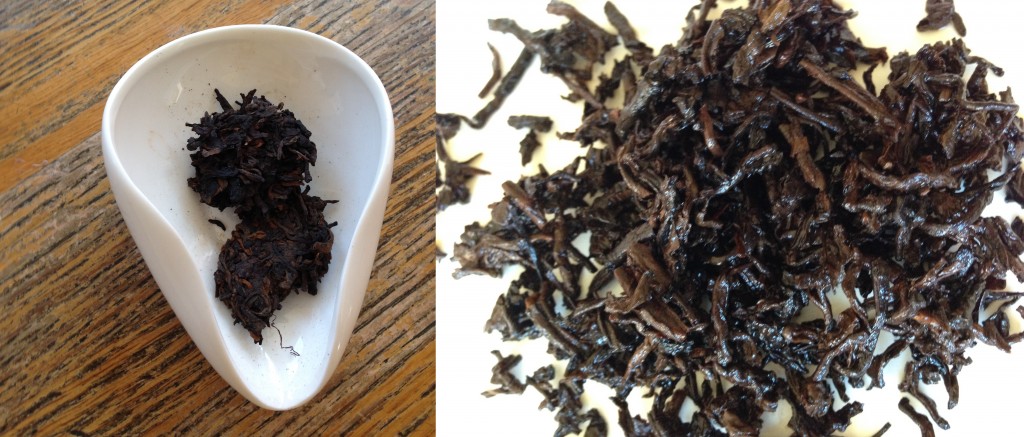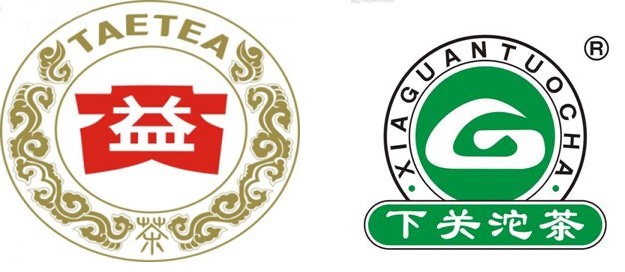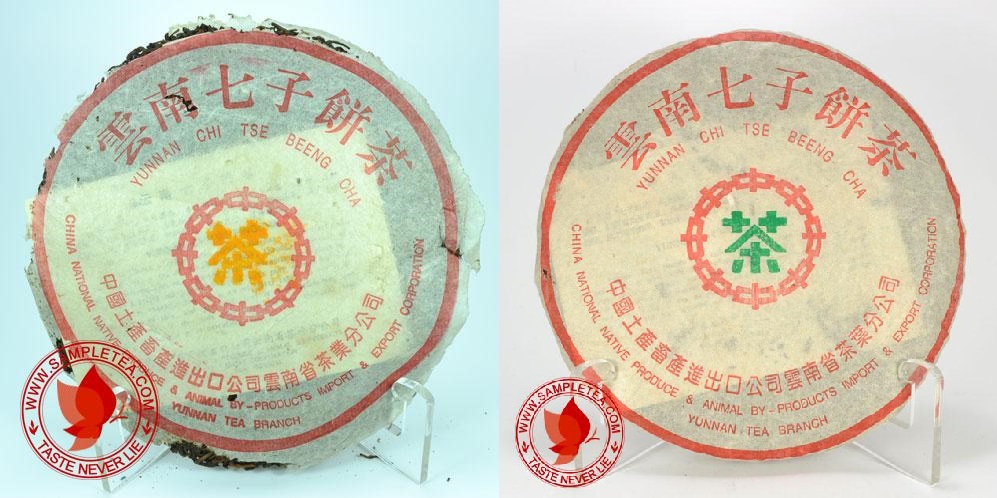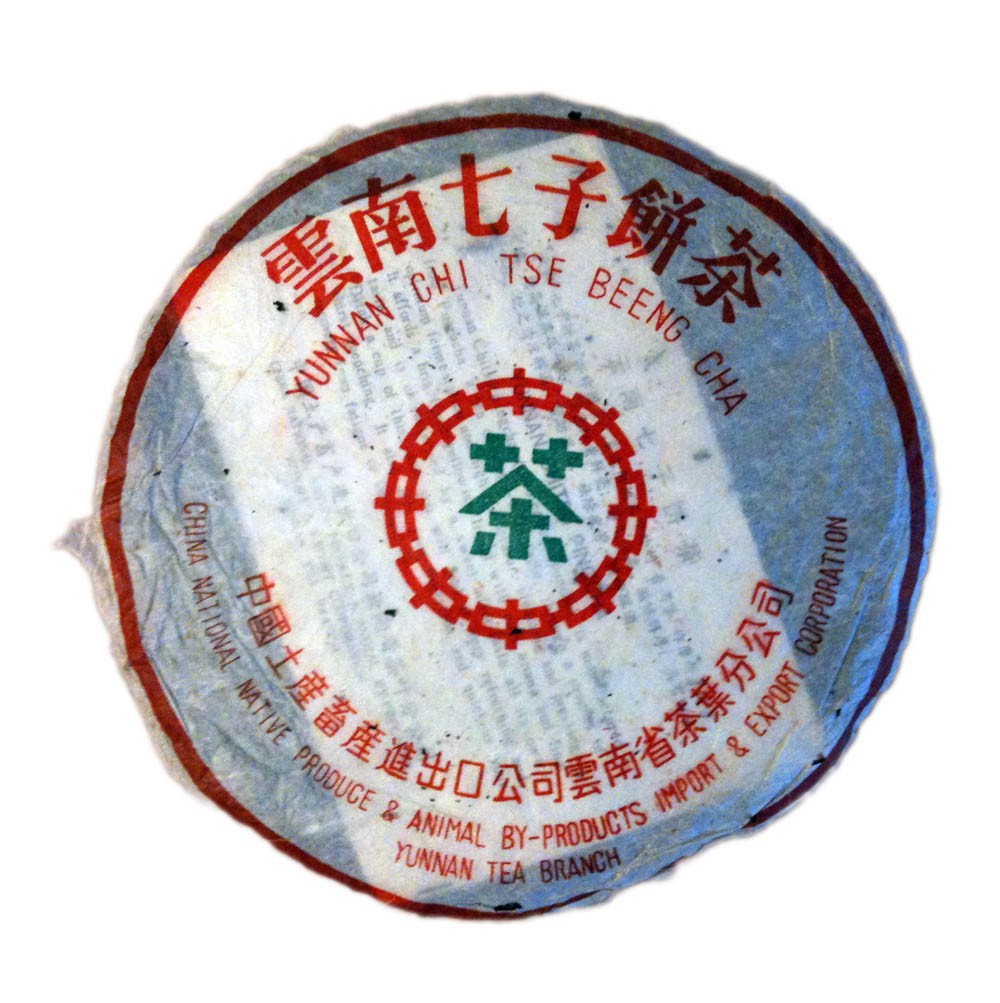Pu’erh brands play an important role in the marketing and selling of samples, cakes and tongs of pu’erh tea. This is far more pronounced in the Yunnan-based pu’erh when compared with their Fujian-based Yancha selling counterparts or Taiwanese oolong selling merchants. This has resulted in some fascinating convolutions within the pu’erh scene… CNNP sold their name and wrappers to anyone willing to pay, seemingly every operations specialist at Menghai formed their own factory (1,2,3), and forgery continues to be a major issue. This is true for not only highly-priced gushu and expensive aged tea but Menghai plantation tea! The pu’erh market also has a tendency to attach itself to brands and certain recipes (see 7542 speculation) and even a brand that has been protective over their reputation like Menghai, has had their recipes blatantly copied until it was deemed illegal in 2005.
Note: It is important to note that the term factory is tossed around very loosely. It can mean anything from a small family operation to a high-volume producer like Menghai or Xiaguan. While the largest factories have been in existence for a while, the total amount of pu’erh tea factories has increased exponentially since the 1990s!

The Big Playas
Who are they?
Menghai (Dayi)
The biggest, most high-profile of them all. Menghai (Factory #2) is still the undisputed king of ripe pu’erh and the home of the famous 7542, 8582, 7532, 7572, 8592, and 7262 recipes. Dayi is also based in pu’erh hotspot Xishuangbanna. These aspects all help to make Menghai the biggest and one of the most trusted big factory of them all.
Xiaguan
Factory #3, but really #2 to Dayi. Like Menghai, Xiaguan is an old factory and has been through China’s ebbs and flows. Xiaguan is especially renowned for their tuos and compressed cakes. Menghai and Xiaguan are responsible for many of the benchmark aged teas from the 70s, 80s and 90s.
Others
Menghai and Xiaguan are the only real old players. Kunming Tea Factory could also be considered, but due to the inconsistency and confusion associated with their brand is often overlooked. Mengku, Haiwan, Six Famous Tea Mountains and others are all newcomers spawned since the 1990s. These factories vary in size and some are quite large (but not old). Even though many of these factories were spawned out of old Menghai personnel there are so many contributing factors to the complex operations of a big factory that stop these newcomers from displacing the old, big players. For instance, even Haiwan’s ripe pu’erh (Haiwan was founded by two longtime Menghai employees, including the co-inventor of ripe pu’erh!) can only be considered similar to the Menghai Factory productions, despite trying so hard to replicate the Menghai recipes.

Why Buy from a Big Brand?
Consistency. Menghai and Xiaguan are some of the only existent companies with a proven record of processing pu’erh that will age well. With increasing concerns over the aging viability due to misprocessing (especially in small productions), going with a big brand is a way to ensure the proper production and pressing of maocha. The benchmark pu’erhs for 80s and 90s are all Menghai and Xiaguan productions and the most popular recipes produced today are all creations of the 1970s and 1980s.
Ripe Pu’erh. Since the invention of ripe pu’erh in the early 1970s, Menghai has long been the standard for shu pu’erh. Recipes like 7262, 7572, and 8592 are produced in huge batches nearly every year! Menghai will also typically age their tea before pressing it to help eliminate the stank and make their product immediately drinkable. Xiaguan isn’t as known for their ripe pu’erh but also creates very reliable recipes.
Note #1: New school pu’erh is all about single origin tea from wild/old arbor trees. These recipes and benchmark older teas were all old school pu’erh, plantation blends.
Note #2: Benchmark teas: 1980s 7542 (88 Qing Beeng), 1990s 7542 (92 Qing Beeng, 97 Qing Beeng).

Paying for the Brand
As is often the case in the wild, ambiguous world of pu’erh the pros are counter-balanced by a number of persuasive counterarguments against the purchase of big-factory productions. The most basic of these is the price. Despite being relatively affordable compared with the even wilder world of gushu, Menghai Tea Factory (and even Xiaguan) are heavily marketed, visible, and speculated-upon brands. When you buy a Menghai product you are paying a premium on their brand. Much of the speculation relies on the arguments found above, helping to make Dayi some of the most expensive plantation pu’erh. Another reason for the inflated price is the liquidity (ease to redeal) of labeled Menghai or Xiaguan teas. This is well-covered by Marshaln and is likely why the best bargains for drinkers are often cakes without wrappers!
Note: Xiaguan and other big factories like Haiwan suffer alot less from over speculation and price inflation than Menghai.
1988 Qing Beeng (7542) == 2014 7542?
By most western standards Dayi is still a relatively affordable brand. Since the benchmark teas were made by Menghai or Xiaguan, why not buy a few tongs to sit on. In 20 years, won’t you basically get recreations of these famous pu’erg beengs? Sadly, things are not so simple. These are a couple aspects to take into account.
The most obvious of these is storage. Storage can make or break a tea (the 88 Qing Beeng was famous because of its storage) and the traditional storage methods (used for famous pre-88 QB cakes) for most of these famous teas are virtually impossible to recreate in any sort of home-storage scenario. Complicating matters, there is no real consensus on the best home storage method, with many radically different opinions.
These famous recipes are pretty consistent year to year, i.e. 2012 7542 vs. 2013 7542. However, over the years pu’erh cultivation and the pu’erh market has changed dramatically from what they were in the 1970s or 1980s. Pu’erh demand has increased tenfold and to meet the demand lesser quality material is often cultivated and mixed in. Bill of Ancient Tea Horse Road compares this to the cutting of drugs, creating an overall inferior or weaker product. Another possible contributing factor to a lower quality product is that there are far more pu’erh producers many specializing in higher-end maocha. The high-quality material used by these specialized operations might’ve previously gone into a blend. All these factors make it so the famous 1988 7542 might actually be quite different from your 2014 7542.
Note #1: In this post, Bill also specifies 2004 as the year of the “cutting”.
Note #2: Another contributing factor to the aging prospects are the ultra-compression practiced by factories, especially Xiaguan. Many speculate that these ultra compressed cakes will not age very well (or at least very slowly) in the dry and cool climates of North America and Europe.
Takeaways
- Paying for big brands (and popular recipes) ensures reliability in processing and some consistency.
- You will pay a premium if you go with the big brands, specifically Menghai.
- Older raw pu’erh recipes (7532, 7542, 8582) are somewhat time-proven with a couple major qualifiers.
- Menghai ripe pu’erh cakes might not be the most cost-effective but remain the gold-standard and are ultra-reliable.



Leave a Reply